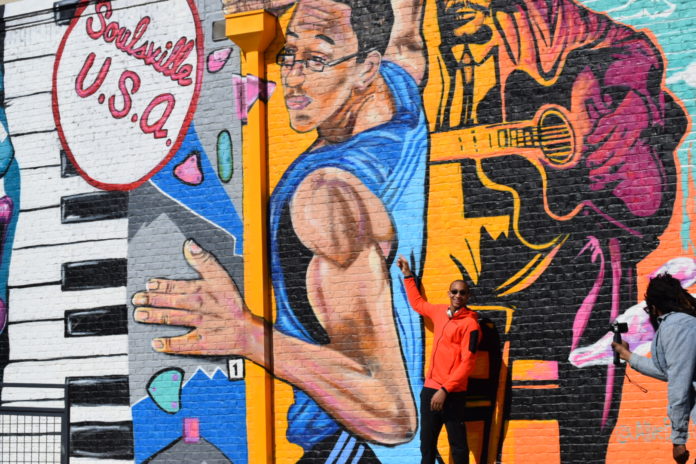
Last year, the reportedly first nonprofit climbing gym in the United States featuring a pay-as-you-can business model opened in Tennessee: Memphis Rox. Buzz circulated online on climbing, indoor climbing, outdoor and non-climbing publications alike after its opening on March 22nd. Now 18 months since Memphis Rox opened its doors to all, the Climbing Business Journal checked in with Jon Hawk, Director of Operations, and Zack Rogers, Director of Administration, to learn more about the business side of the equation and share their experience with climbing professionals interested in a similar undertaking.
1.Start with Funding
Memphis Rox was made possible when founder Tom Shadyac, a Hollywood movie director, invested $11 million into launching the nonprofit. The substantial sum covered a complete list of start-up costs required to create a start-of-the-art facility, including: the $2 million cost of purchasing an empty commercial complex in Soulsville large enough for bouldering; the additional cost to raise the roof to over 50 feet for rope climbing and renovate the mezzanine upstairs for community building; the $1 million Walltopia contract to construct the climbing walls and install the padding; and the $200 thousand import of climbing holds – from Kilter, Rock Candy, So iLL, Teknik and other major climbing brands – needed to set 300 initial climbing routes. The million-dollar donation also acts as an ongoing safety net in the short term when covering the $1.5 million annual cost of operating the gym.
“We don’t have a mortgage, construction loans or investors to repay. These are huge monthly operational expenses of commercial climbing gyms that we are not dealing with,” says Hawk.
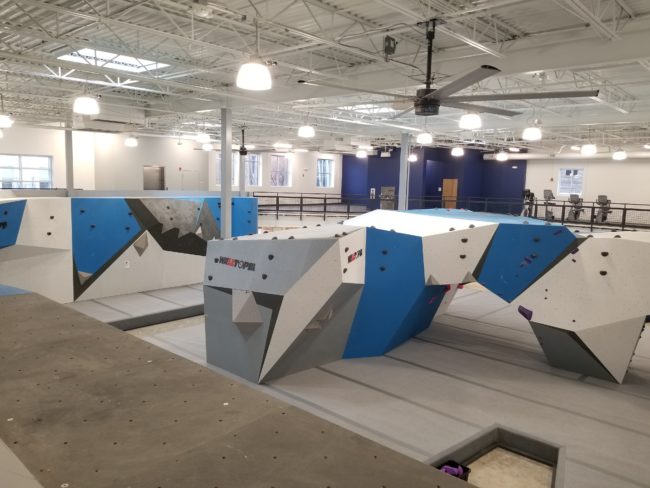
The million-dollar investment of Shadyac followed a head injury from a mountain biking accident in 2007 which influenced him to re-evaluate his life, sell his mansion and private jet and move into a trailer. Around that time, Shadyac started teaching college students in Memphis, where his family had roots, and witnessed the effects of poverty in the Soulsville neighborhood. Having taken up climbing to “clear his head” and reduce stress, the idea of Memphis Rox eventually took shape and Shadyac flew 18 kids from the area to climb in Boulder, Colorado, before investing further into the project. When approaching major donors in your network, Shadyac’s story can serve as a reminder of how sharing the experience and social benefits of climbing – as well as the reality of poverty – can spark generosity.
Without initial capital like a robust donor base or existing climbing facility, Hawk and Rogers encourage prospective pay-as-you-can operators to also consider making a difference in small ways. For-profit gyms interested in increasing accessibility for underprivileged youth, for instance, could lower discounts for students even further. Students comprise about 70% of the 860 average monthly members at Memphis Rox, where the suggested membership rate for students is set at $25 per month – well below student rates of comparable gyms – and about 95% of student members pay in full.
“If your gym is a for profit gym, reach out to schools, the Boys and Girls Club, community foundations, and set up relationships that allow more people to access your gym,” recommends Rogers.
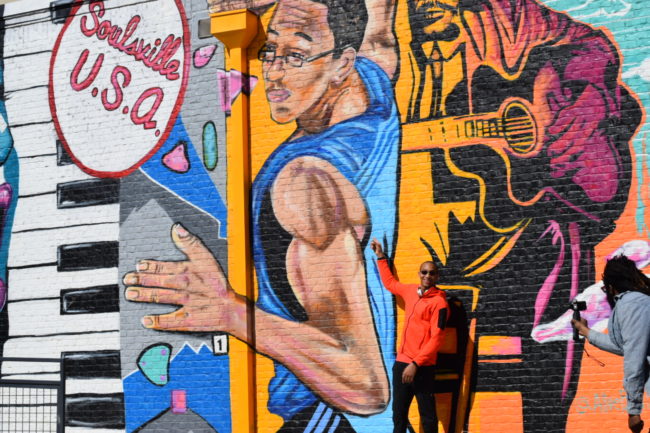
2.Embrace Competition
When considering where to open a brand-new pay-as-you-can climbing gym, the temptation may be to target an area with less competition. Memphis Rox was poised to be the only full-service climbing gym in Memphis but, just before opening, High Point Climbing & Fitness began construction on their own 32,000-square-foot facility under twelve miles away, as the crow flies. However, Hawk and Rogers describe the opening of Memphis Rox nine months before the opening of High Point Memphis as a “happy accident.” Two months after Memphis received its second gym, daily check-ins at Memphis Rox spiked from 500 to 600 climbers. Rogers attributes this effect to an increase in the overall awareness of climbing in the city and differentiation between the services of Memphis Rox and High Point Memphis.
“More people knew about the sport, and with our accessibility it works out. There’s enough population in the city to easily support two climbing gyms, and I think we’re seeing that play out,” says Rogers.
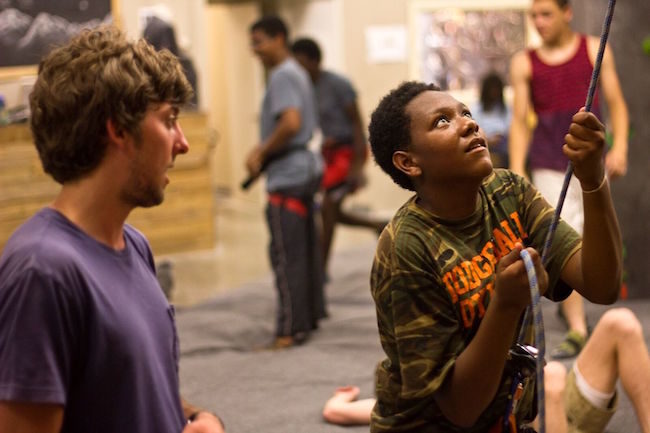
3.501(c)3 is Challenging
Six years before Memphis Rox opened, The Mountain Goat started tackling the cycle of systemic poverty affecting at-risk American youth in Greenville, South Carolina. Ryan McCrary, then Executive Director, spoke with the Climbing Business Journal in 2016 and noted the challenge of operating as a 501(c)3 climbing gym. The nonprofit designation helped raise initial funds but later hindered the organization financially. Gym revenues were classified as Unrelated Business Income and taxed by the IRS like revenues of a for-profit business, nonprofit grants and major donations in climbing were hard to come by, and there is no equity in the nonprofit model to show investors, since profit remains within the company for programming. In 2018, The Mountain Goat closed its doors and the owners began pursuing a new climbing facility (the complex is now being used as a cafe, bar, bike shop and meeting space).
Many of these limitations are true for Memphis Rox. Even in a pay-as-you-can model in which day pass and membership rates are only suggestions, payments are still made in exchange for a service and are therefore not tax-deductible. However, operating as a 501(c)3 does keep the door open for additional tax-deductible contributions – which account for about 10% of total revenues at Memphis Rox. Gym users can pay it forward by adding on donations to their day pass or membership payments, or by donating extra at the pay-as-you-can juice bar. Contributions from members help offset program costs, like the cost of providing 16.5 thousand free meals per year. As for support from outside organizations, Memphis Rox is operating at a different time for climbing. Hawk plans to pursue more donations from climbing brands and grants from local foundations going forward, with climbing catapulting into the spotlight, and the public can donate online.
“We are not a traditional nonprofit, we are a climbing gym in a basketball city, so potential community donors were initially like, ‘What the hell are you guys doing?’” says Hawk. “Now that they see what we’ve been doing and hear our stories, the conversation is starting to turn in our favor.”
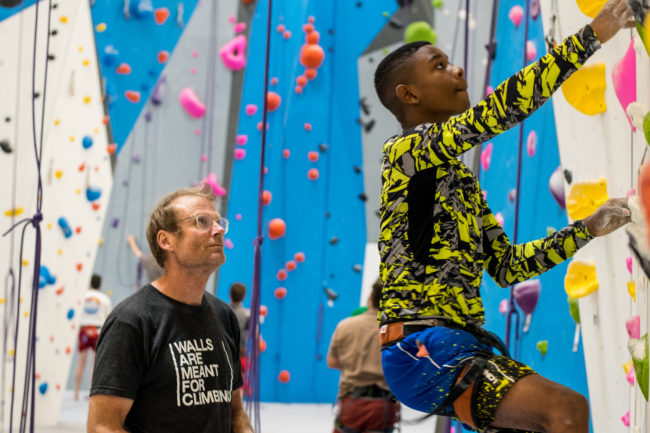
4.Fostering Community Encourages Donations
After opening its doors, day-to-day management of gym operations has been a focus area of Memphis Rox. Both from a mission and financial perspective, Hawk and Rogers identify benefits from maintaining an inclusive gym atmosphere. In terms of mission, not separating climbers who pay different rates is one of the organization’s uncompromisable principles. Slotting at-risk youth programming into specific time periods, for example, would side-step the goal of being not only an accessible climbing gym but a family institution which brings the entire community together.
In terms of finances, inclusion is a free marketing tool. Climbing with members paying full price develops a sense of pride in contributing too, and climbers see first-hand the positive impact of their contributions and may donate even more. One Memphis Rox member working as an attorney, for instance, fell in love with the gym’s mission after climbing alongside student members and is now funding an outdoor mountaineering trip to Mt. Baker. Hawk and Rogers estimate 40% of gym clientele pay in full or more, a ratio which helps offset the low charge for student memberships when the gym averages 500 daily check-ins on weekdays and 600 on weekend days.
“A lot of these kids have never left the neighborhood before,” says Rogers. “It’s about accessibility, making sure that people know what opportunities exist and providing ways to experience them.”
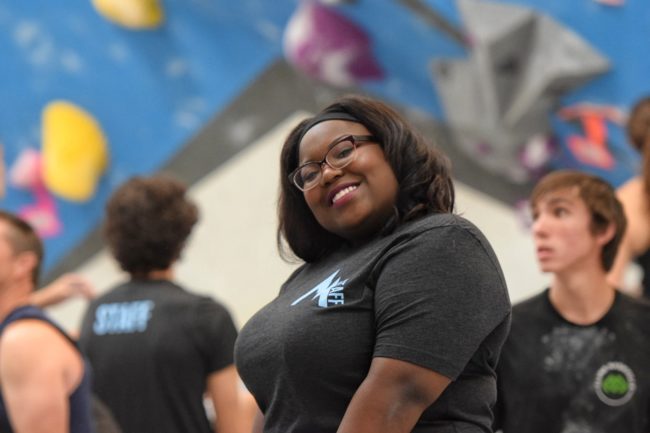
5.Focus on Local Staff
When it comes to human resources, about 70% of Memphis Rox staff come from the surrounding neighborhood. Like inclusion, the practice has both a mission and financial basis. In terms of mission, Memphis Rox focuses on bringing rehabilitation to the whole community, which includes hiring staff with challenged backgrounds themselves and providing professional training for future jobs. In a city in which livelihoods are impacted by a 24.6% poverty rate – 4th highest among US cities with a population of 500 thousand people or more – the organization is one of the few employers in the neighborhood and strives to compensate employees at a living wage of $12 per hour, $4.75 higher than the minimum wage in Tennessee. In terms of finances, the gym reputation has spread as an accepted “safe space” in the community, and potential damages in a city with one of the highest property crime rates in the US or involvement of law enforcement has been averted through friendship.
“What [our local staff] lacked in climbing knowledge they have more than made up for in general knowledge,” says Rogers. “They know how to reach out and speak to someone. It never comes to any sort of violence. That’s probably one of the most rewarding things I’ve experienced while working here.”
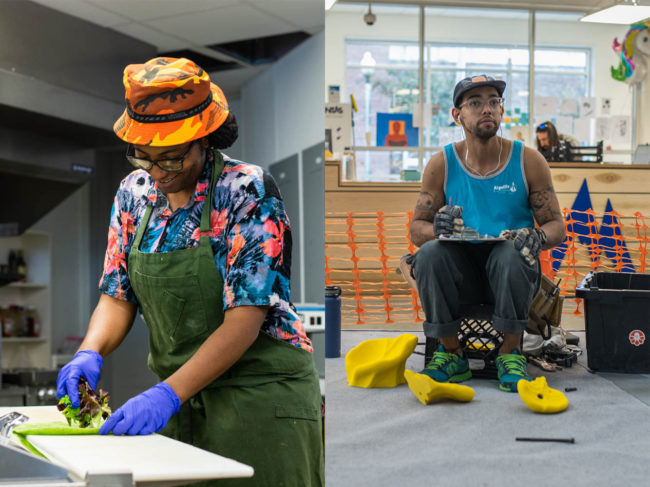
6.Volunteers Expand the Community
Finally, optional pay need not equal totally free entrance. One of the unique aspects of the Memphis Rox model is the substitution of humanpower for currency. The question for first-time visitors is less whether to pay and more how to pay, cash or in-kind. For climbers who have more time than money to give, Memphis Rox accepts 5 hours of volunteering or 5 meetings with mentors per month as substitutes for membership dues. Hawk and Rogers estimate around 100 volunteers are currently active at the gym. For liability reasons, volunteers are not permitted to handle transactions or provide instruction, but they can belay climbers and assist with facility and campus maintenance. Volunteers can also serve at partnering non-profits in Memphis and that time counts toward their membership at Memphis Rox. There are legal aspects of incorporating volunteers at the gym with regulations that vary by state.
Like fostering community and focusing on local staff, there is both a mission and financial benefit to doing so. In terms of finances, in-kind contributions at Memphis Rox like volunteering help offset the operational cost of paying staff a living wage. In terms of mission, people from all socio-economic backgrounds can climb at Memphis Rox – regardless of ability to pay.

Joe Robinson has been working in the climbing industry for over a decade and currently manages CBJ editorial. He traveled the world as the IFSC’s community manager during Olympic inclusion and across the U.S. while writing for Alpinist, Climberism, DPM and CBJ. He also worked in local climbing gyms of the Pacific Northwest and West Michigan while advancing economic empowerment, educational equity, youth development and diversity programs of national nonprofit organizations.




